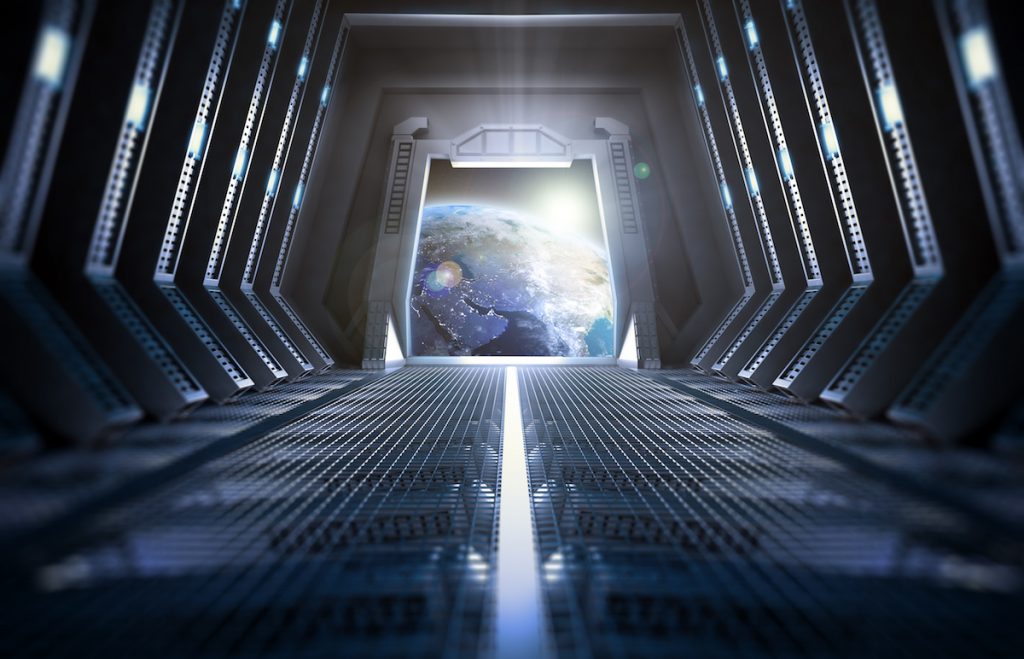The themes of reform and revolution are strong in the latest installment of the Star Wars franchise, The Last Jedi. While the film has opened to critical acclaim, popular reaction has been sharply divided. The drop-off in box office sales from the first to succeeding weeks is remarkable, and the decline from the first to the second weekend is among the worst of the entire franchise.
There’s plenty of fodder for fans and critics alike to pore over in this lengthy episode, which clocks in at two hours and thirty-five minutes. Episode VIII is a worthy film, however, because it deepens the franchise-long exploration of the dynamic between the Jedi order, the Sith, and the light and dark sides of the Force.
In the contrast between Luke Skywalker, the apparent last Jedi, and Kylo Ren, his sometime apprentice, the differences between necessary reform and violent revolution become starkly apparent.
Reform and the Jedi Order
Start your day with Public Discourse
Sign up and get our daily essays sent straight to your inbox.The Last Jedi opens where The Force Awakens left off, with Rey offering Luke Skywalker his own lightsaber. From this opening scene, it is clear, as Luke puts it later, that this film “is not going to go the way you think.” Luke, the naïve if near-invincible hero of the original trilogy, has become a bitter, battered, and disillusioned old man. Much like his mentor, Ben Kenobi, Luke has hidden out in a remote section of the galaxy to live out his dotage. But unlike Ben, Luke has been incapacitated with doubt and remorse. The one thing that drives him is the sense that it is time for the Jedi order to end, but in the climactic moment he remains paralyzed by indecision and is unable to set the fire that is necessary to refine the Jedi legacy.
Amid his passivity and withdrawal, Luke does have a clear recognition of the shortcomings of the Jedi. When Rey presses him to take up the mantle of Jedi master again and come to the aid of the Resistance, Luke responds by pointing out the failures of the Jedi through the ages. It was, he says, when the Jedi were at the height of their power that they suffered their greatest defeat. They allowed Darth Sidious to rise to power and destroy the Republic. It was their arrogance and their pride that led them into decadence and corruption.
We can see instances of this arrogance throughout the first three episodes. A good example is an exchange between Obi-Wan Kenobi and an archivist in the Jedi temple in Episode II. Obi-Wan is looking for the planet Kamino, but can find no record of it in the archives’ star charts. The archivist responds to Obi-Wan’s protests by saying that if it isn’t in the charts, then it doesn’t exist. That’s another way of saying that the Jedi know all there is to know. It is Jedi arrogance that puts Anakin Skywalker and Chancellor Palpatine together. It is Jedi arrogance that rips children from their natural families and instills in them a flawed ethic of disinterested benevolence.
And, as Luke puts it to Rey, it is Jedi arrogance that assumes that the fate of the Jedi order is identical with the fate of the good and the true. The Force is in everything, binding everything together, and the Jedi do not have a monopoly on it.
All this, along with his own failures in trying to reestablish the Jedi order, is what leads Luke to the conclusion that he must die and the Jedi must die with him. He wants to burn the past. In this way, while Luke has been described in this film as a kind of John the Baptist, he is more of radical reformer of the Jedi order. No greater act of iconoclasm can be thought of than to burn the sacred tree and the sacred texts.
Revolution and the First Order
If Luke is a kind of Protestant reformer, attempting to address the decadence and corruption of his order through fire if necessary, Kylo Ren is a type of French Revolutionary, with an extreme antipathy toward history, tradition, and inheritance. The relationship between Luke and Kylo is evocative of that between the Protestant Reformation and the French Revolution, which has often been described in genealogical terms.
The break between Luke and Kylo comes when Luke sees what his apprentice is becoming, and considers, ever so fleetingly, destroying him. For Kylo, this cements the narrative that Snoke has implanted: that the Jedi cannot be trusted and they seek to limit his potential. By the time of The Last Jedi, Kylo has literally killed his father and turned his back on all that defined him before, including his idolization of Darth Vader.
Like the Jedi, the Sith are characterized by arrogance. Snoke’s colossal error is that he assumes that he has complete omniscience and omnipotence. Speaking to Rey of Kylo, Snoke gloats, “I cannot be betrayed, I cannot be beaten. I see his mind, I see his every intent. Yes. I see him turning the lightsaber to strike true. And now, foolish child. He ignites it, and kills his true enemy!”
In the pivotal scene in which Kylo successfully does what all Sith apprentices try to do—that is, destroy their masters—Rey initially thinks that he was turned to the Light. But instead Kylo has come to terms with his revolutionary identity. “The Empire, your parents, the Resistance, the Sith, the Jedi . . . let the past die,” he says to Rey. “Kill it if you have to. That’s the only way to become what you were meant to be.” Kylo Ren will never be free, he thinks, until the last Sith has been strangled with the entrails of the last Jedi. And by the end of The Last Jedi, this seems to be what he has accomplished.
The Empire and the Rebellion, the Republic and the Jedi, the Resistance and the Sith—all these things are part of the old order of things that has passed away now that a new supreme leader, supreme leader Kylo Ren, can remake the galaxy in his own image.
The Democratization and De-Mythologization of the Star Wars Universe
Part of the discontent with The Last Jedi has to do with its posture toward the earlier films, which echoes the attitude of the revolutionary Kylo Ren. It takes the audience’s expectations and adulation of the original trilogy and tosses them away, just as Luke does with his lightsaber in the opening scene. Episode VIII opens up a whole new era in the Star Wars universe, where the important people aren’t just named Skywalker or Solo, but can come from anywhere and be anyone. In some ways, this is a de-mythologization of the Star Wars canon. The Golden Age of the Republic turns out not to have been so great. The heroes that we adore are, in fact, deeply flawed.
By the end of the film, though, it seems as if Luke has reached a new insight. Rather than simply burning the past in an attempt to forget or erase it, he tells Kylo that in fact Luke Skywalker will not be the last Jedi. Some trees need to burn in order to give off fertile seeds, and perhaps this is what Luke’s sharp critique of the Jedi legacy has accomplished with Rey. The Jedi texts, if not the Jedi traditions, have been preserved. The past has not been forgotten, but its failures can teach us important lessons.
When Yoda wisely tells Luke that “the greatest teacher, failure is,” he means to say that masters have to offer their entire selves, warts and all, to their followers. The humility that comes along with failure, brokenness, and finitude is perhaps the greatest thing that one person can teach another.
Cicero once wrote to his son that “you are the only man of all men whom I would wish to surpass me in all things.” This is the posture that leaders must take toward those who follow them, masters toward their disciples, and parents toward their children. As Yoda says of Jedi masters and their apprentices, “We are what they grow beyond.” The arrogance of the Jedi and the Sith needs to be replaced with a deep sense of failure and humility, out of which fruitful service and sacrifice can grow. In this way, The Last Jedi is the Star Wars film we need right now, even if it isn’t the one we want or deserve.
Jordan J. Ballor is a senior research fellow at the Acton Institute and a postdoctoral researcher at the Vrije Universiteit Amsterdam, as well as associate director of the Junius Institute for Digital Reformation Research.













